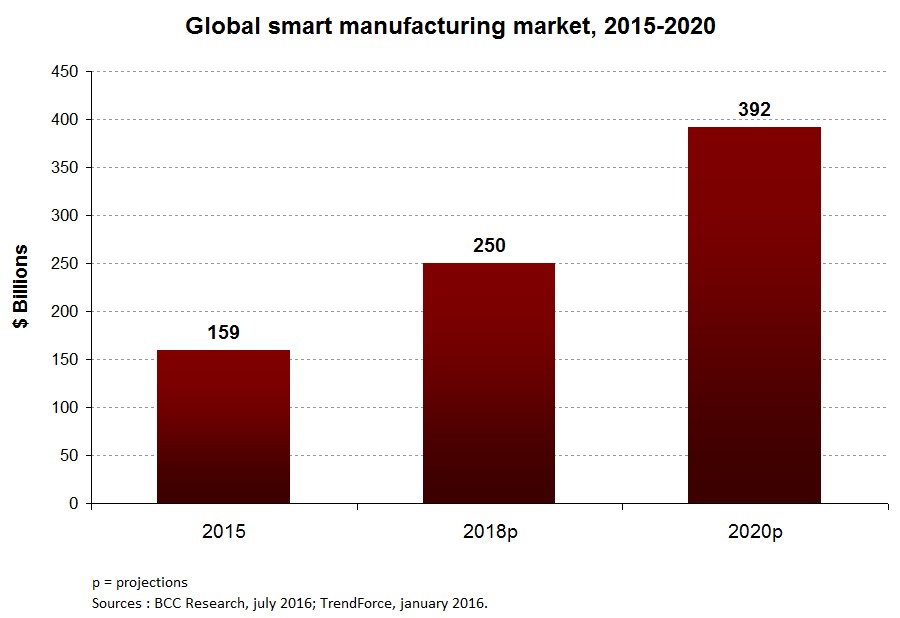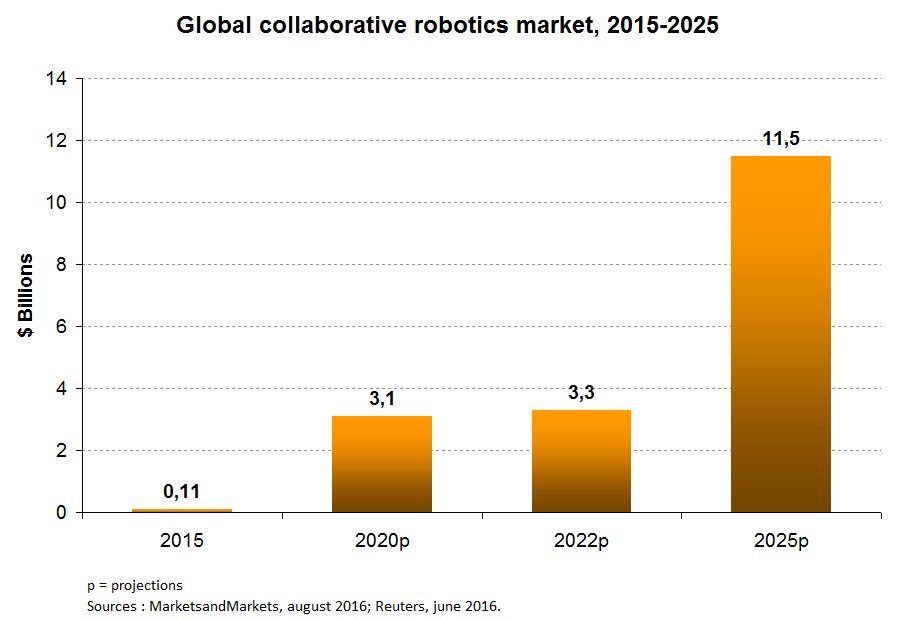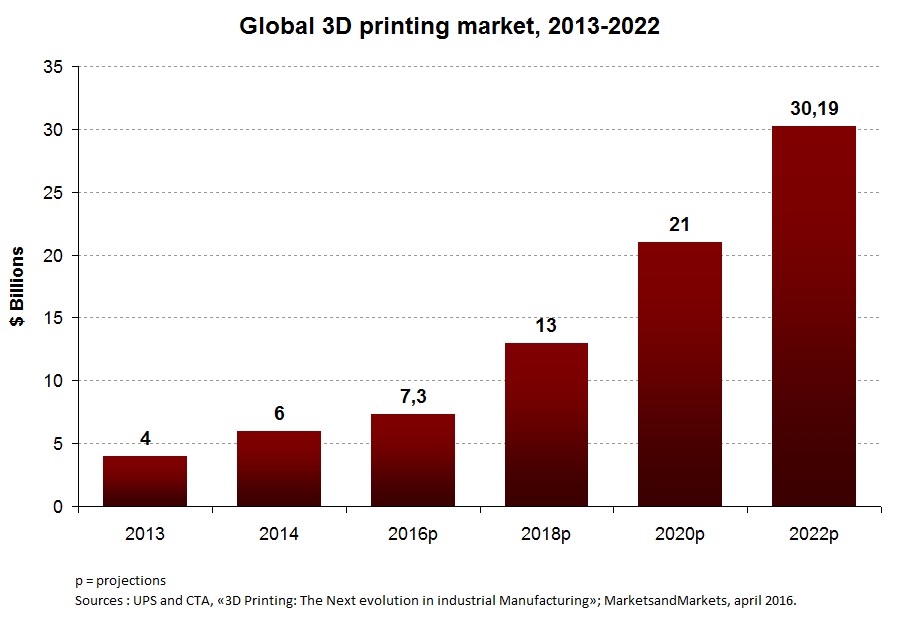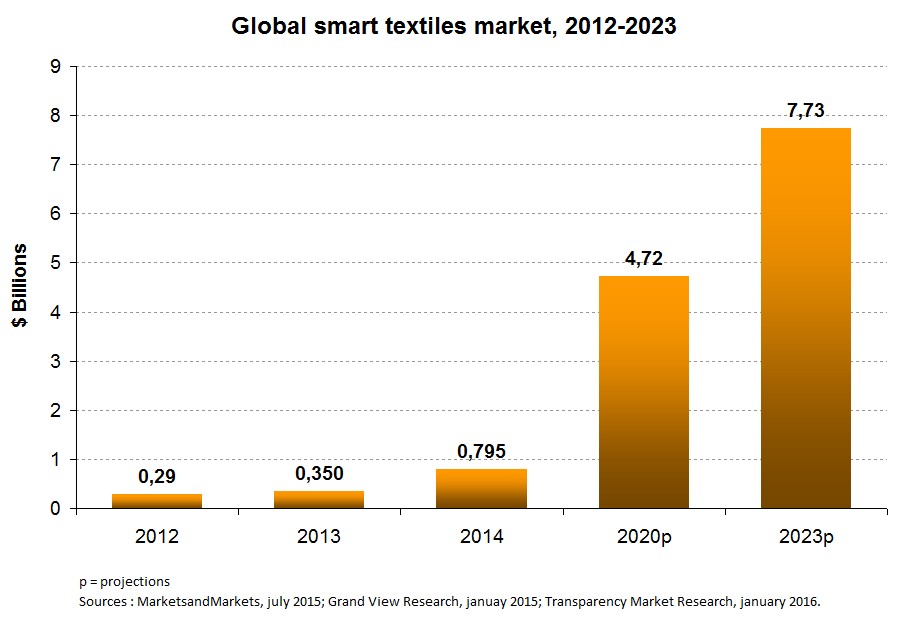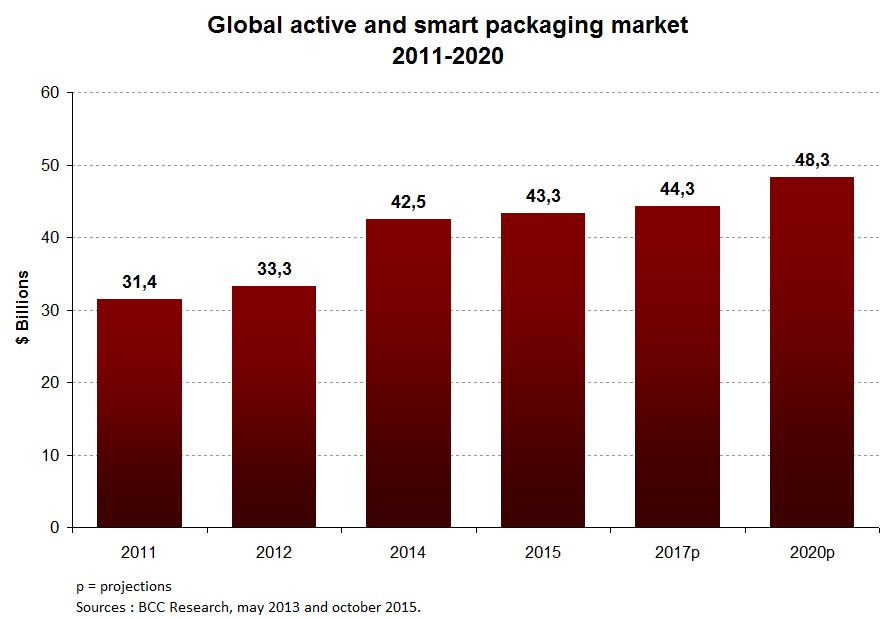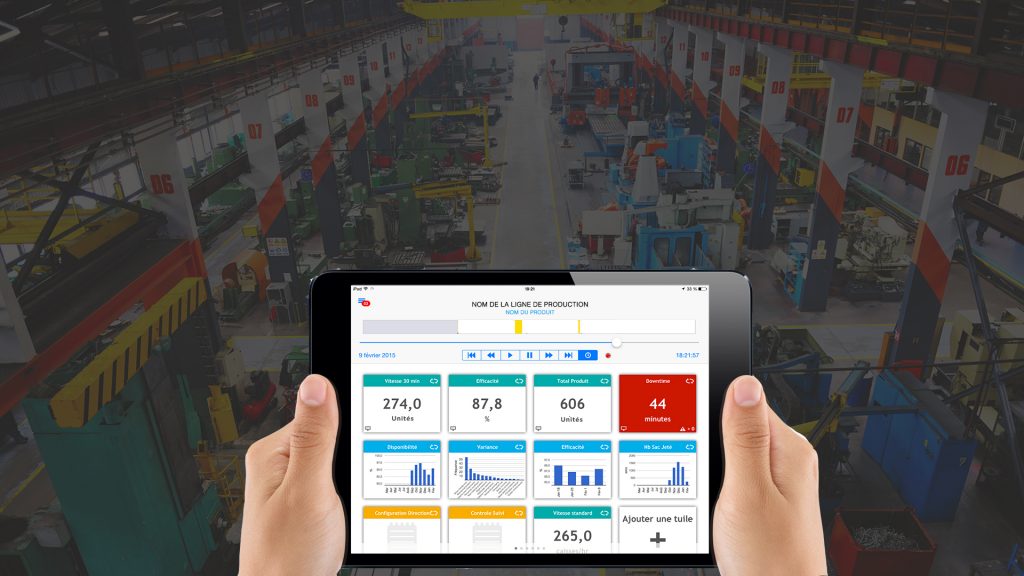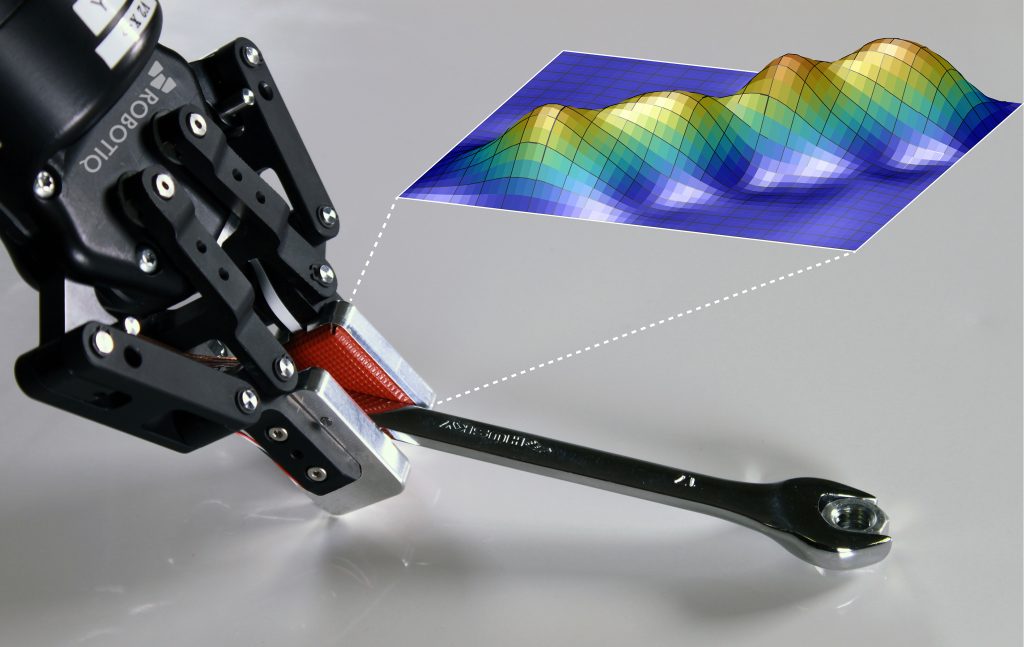The manufacturing sector has entered a period of profound change marked by the intensive use of leading-edge technologies in industrial production. Against this background, which has spared no industry, traditional manufacturing practices no longer suffice to ensure competitiveness.
Advanced manufacturing offers manufacturing companies an extraordinary opportunity for innovation and growth. It shapes the way products are designed, manufactured, controlled, distributed and even repaired, using emerging technologies. Leading-edge technologies used to improve the competitiveness of manufacturing companies include the Industrial Internet of Things, collaborative robotics, additive manufacturing or 3D printing, smart textiles, smart and active packaging, and composite materials.
This article is aimed chiefly at presenting the innovative technologies used in advanced manufacturing. It does not constitute an exhaustive representation of the technological offer applied to this sector across Montréal territory. Part 1 presents a statistical overview demonstrating the growing importance of the emerging technologies that drew our attention. Part 2 presents innovative solutions developed in Montréal that reflect this new vision of manufacturing.
EMERGING MARKETS FOR TOMORROW’S INDUSTRY
Markets for technologies that offer a significant advantage to the advanced manufacturing sector are widely expected to undergo rapid growth in the years to come, reaching between $3 billion and $151 billion by 2020, with high average annual growth rates varying between 8% and 95% over a period of five years.
Smart manufacturing
Smart manufacturing (also called “Industry 4.0”) are characterized by a high level of automation and the use of a series of digital technologies throughout the production chain, particularly the Industrial Internet of Things. The latter denotes a group of technologies (i.e., sensors, predictive data analysis, augmented reality, etc.) integrated into industrial equipment for purposes of improving operational efficiency and reducing costs. Imagine, for moment, the presence, on machines and products, of sensors that collect important data. The analysis of those data would make it possible to optimize production by more accurately identifying problems that arise. Once limited to defence-related research, augmented reality has become an essential tool in the manufacturing sector. More specifically, it is used to assist in decision-making in the area of maintenance.
According to recent estimates from BCC Research, the global market for smart manufacturing will reach $392 billion by 2020, reflecting an average annual growth rate of 19.8% over five years. Asia and Pacific ($151 billion in 2020) and North America ($112 billion in 2020) should remain its principal world leaders, as was the case in 2015. Alone, these two regions have cornered 67% of this market.
The smart manufacturing market is driven mainly by the market comprised of the Industrial Internet of Things. In 2014, the use of this technology in industrial production represented a global market worth $94 billion, and this market is expected to grow by an average of 8% per year over the next five years, to reach $151 billion in 2020.
Collaborative robotics
Collaborative robotics is representative of the current trend in industrial robotics. Also called “cobotics,” it allows for human-robot interaction within a shared workspace. Collaborative robots are used to assist humans with low value-added tasks, while the latter are left to carry out more demanding tasks. For example, collaborative robots can be used to supply parts to a machine operator during an assembly process. Among the many advantages they offer, collaborative robots can solve problems brought about by labour shortages and promote greater job satisfaction by giving workers tasks with higher added value, and they are also flexible and more accessible to all types of companies, from SMEs to large industrial groups.
The global market for collaborative robots should record significant growth in the years ahead. Estimated at $110 million in 2015, it is expected to reach $3 billion by 2020, which is equivalent to an average annual growth rate of 95% per year over five years. From 2020 to 2025, growth prospects in this market are good, with an average annual growth rate of 30% expected. The automobile and electronics sectors are among the industries driving this market.
Additive manufacturing
Additive manufacturing, better known as 3D printing, refers to the process of manufacturing a real object using a virtual model, by adding several successive layers of a given material (i.e., plastic, wax, metal, etc.). The desired real object is obtained when the object is exposed to air and submitted to ultraviolet light. This technique can be used at any stage during the product manufacturing cycle, from pre-production (prototyping) to large-scale production. 3D printing offers several advantages compared to traditional manufacturing. It reduces assembly costs and product testing, as well as production and marketing timetables, and warehousing costs. It even promotes product customization. 3D printing holds considerable promise for manufacturers in several industries, notably the automobile industry, aeronautics, textiles, clothing, and the medical sector.
The global 3D printing market was estimated to be in the order of $6 billion in 2014. Between 2015 and 2020, it is expected to grow by three and a half times that amount, to reach $21 billion over a period of five years. This is equivalent to an average annual growth rate of 23% between 2015 and 2020. Metal additive manufacturing, commonly known as metal 3D printing, should record the highest increase, with an average annual growth of 31.5% expected between 2015 and 2020, compared to an average annual growth rate of 26 % for plastic 3D printing. This technology is growing by leaps and bounds, particularly in the medical sector, where an average annual growth rate of 25% is predicted between 2015 and 2020. This rapid growth may be attributed to the development of niche products, such as surgical tools, dental implants, orthopaedic implants, and even biological tissues. Regardless of the type of material used, North America will be the leading market for 3D printing.
Smart textiles
Smart textiles designate textiles that incorporate electronic components (i.e., chips, sensors, etc.) and are capable of communicating with their environment or the wearer. In the medical field, for example, smart textiles can serve to manufacture bandages that progressively administer medications through the patient’s skin. As a technology with applications in multiple industries (e.g., clothing, transportation, medicine and chemistry), smart textiles today constitute a promising field for the advanced manufacturing sector.
Smart textiles accounted for a global market worth $350 million in 2014. In the years ahead, this market should record strong growth, with an average annual growth rate of 35% expected between 2015 and 2020. While only still emerging, these textiles have quickly caught on in several manufacturing industries, notably in the manufacturing of medical products, in the clothing sector and even in the automobile sector. Connected clothing should represent one of the niches where smart textiles are most actively promoted. The firm Research and Markets estimates that global unit sales of connected clothing will rise from 968,000 in 2015 to about 25 million in 2021. Several factors are driving the development of these textiles, including wearable electronics, the miniaturization of electronic components, and wireless smart sensors.
Active and smart packaging
Active and smart packaging, contrary to traditional packaging, provides information concerning preservation while monitoring fluctuations in temperature. For instance, active and smart packaging can change colour to indicate a given product’s level of freshness. Using its active function, it can condition the air around food items and mitigate the influence of harmful materials by neutralizing them chemically. Manufacturing active and smart packaging thus addresses concerns over safety and quality control. Its development could add a new dimension to innovation in the manufacturing sub-sector comprised of the food industry.
BCC Research estimates that the global market for active and smart packaging will grow by an average of 5% per year between 2012 and 2020. This market was pegged at $33 billion in 2012, and that figure is expected to rise to $48 billion by 2020. The food, automobile, health and personal care sectors, in particular, have benefitted from advances in smart packaging technology.
Composite materials
Composite materials are manufactured using two or more materials to create a new material with different characteristics, such as a lighter-weight manufactured product. They take the form of carbon fibre reinforced plastic (CFRP) in several industries, mainly in automobile construction and aeronautics. More specifically, these materials can serve to make lightweight components and motors that are highly shock-resistant and provide better fuel efficiency owing to their reduced weight, with the added benefit that they are less harmful to the environment.
The global market for composites should record average yearly growth of 7 to 9% between 2015 and 2020. In the automobile sector, this market is expected to grow by an average of 7.7% per year over the same period. Slightly lower growth is anticipated in the aeronautics sector, with an average annual growth of 6.8% over the same time horizon.
ADVANCED MANUFACTURING, A VECTOR FOR INNOVATION
The development of an advanced manufacturing sector hinges on the emergence of leading-edge technologies. Montréal is now home to several digital factories that use additive manufacturing, and a number of promising initiatives have come forward across the city, all of which present opportunities for manufacturers.
Smart manufacturing
Professor Roland Maranzana, co-founder of the Numérix laboratory at the École de technologie supérieure (ÉTS), is developing innovative solutions for digital factories. In particular, he has designed an analysis and interpretation technology for 3D models of mechanical components destined for manufacturing companies. This technology lets manufacturers quickly locate existing products within their company and accelerate the development of new products by promoting re-use. Using an already-manufactured component, in other words, a company can either use it as a model to manufacture a new product without having to repeat all the design steps, or use an existing component to meet a new need without having to manufacture a new component. The researcher’s expertise in this area led to the creation of 3DSémantix, a start-up company of which he is the co-founder, and the 3DPartFinder shape-based search engine. 3DSémantix has tackled problems related to big data, which resulted in a collaboration with TraceParts, a European company with a catalogue of 25 million components that can be located based on shape. The collaboration with TraceParts has facilitated the search for catalogued components, since the new 3DPartFinder search engine was integrated into their CAD portal. Companies can thus re-use components they have already developed or create new ones based on existing models.
Montréal-based Worximity designs technologies that are inciting manufacturers to undertake a digital shift. The company has developed TileConnect smart sensors that let the user connect any type of equipment or machine for purposes of collecting data from it. The data collected are then stored on a cloud-based platform. In order to allow its clients to easily view key performance indicators, Worximity has developed the Tileboard mobile application, a tile-based dashboard featuring various data that can be viewed in real time on an iPad tablet, a smart phone or a computer. Thanks to these technologies, companies can track their production speed in real time, for example, as well as direct labour costs and the availability of their equipment; they can even determine the principal causes of down time. Worximity’s current clients include companies in the following manufacturing sectors: the food industry, wood products (i.e., doors, windows, furniture), metal production, plastics, recycling, and even the pharmaceutical industry. To date, the company has connected more than 500 pieces of equipment for established clients in several Canadian provinces (i.e., Quebec, Ontario, British Columbia, the Maritimes) and in the United States.
The quality of the components in the aerospace and medical fields stems from the precision of the machines used to manufacture them. With the introduction of automation and the Industry 4.0 concept, it has become essential to guarantee that machines provide high-level performance, and ultimately to ensure that the components produced are also of the highest quality. Professors René Mayer and Sofiane Achiche of Polytechnique Montréal’s Product Development and Manufacturing Research Group (GRDFP) are developing automated smart tracking and diagnostic technologies for use on machines. Based on the notion of “machine learning” and artificial intelligence, these technologies are capable of detecting deviations in precision and anticipating malfunctions in machine-tools. This expertise has allowed the start-up Aximetra Inc. to market fast precision-tracking methods for use on machine-tools developed by the group’s researchers. In the wind energy field, German-based EnBW Erneuerbare Energien GmbH has adopted the solutions for tracking conditions developed by these researchers. This research group benefits from the use of industrial-calibre machines made available by the Virtual Manufacturing Research Laboratory (VMRL).
Advanced robotics
Professor Ilian Bonev, director of the Control and Robotics Laboratory (CoRo) at the ÉTS and holder of the Canada Research Chair in Precision Robotics, has gained worldwide recognition for his expertise in industrial robotics. In particular, he develops various methods meant to improve the precision of industrial robots, that’s to say their ability to place themselves in the desired position with a high degree of accuracy. Calibration is the means most frequently used to improve a robot’s precision, as it makes it possible to identify the “true” values of the robot’s parameters (i.e., distances, angles, flexibility) in order to minimize errors in positioning. For example, several aerospace companies have called upon Professor Bonev’s team to design algorithms that can be used to calibrate robots for purposes of repairing and machining components.
As a complement to this highly useful expertise in the medical and aerospace fields, Professor Vincent Duchaine, holder of the ETS Research Chair on Interactive Robotics and member of the CoRo laboratory, has developed flexible tactile sensors and algorithms designed to make robots more autonomous. These sensors, which recognize an object based on touch, make it possible to ensure safe interaction between humans and robots. They could prove highly useful in the automotive sector, notably for the robotic manipulation and assembly of components. With these two complementary areas of expertise, Montréal has a certain know-how in the design of high-precision and safe collaborative robots. Their use has grown exponentially, and the CoRo lab houses several such models. Thanks to these types of robots, which are often easier to use, we are bearing witness to a democratization in the use of robotics.
ÉTS’s expertise in industrial robotics has spawned various start-ups, including Mecademic. This Montréal-based company has brought its efforts to bear on designing user-friendly miniature robots that are extremely precise. Its product, the Meca500, is a six-axes robotic arm that companies can use to perform precise repetitive tasks within a highly confined space. Thanks to its small size, this robot can be integrated into industrial equipment or an existing production line. The Meca500 can be controlled using a Web interface available on all platforms, which is perfectly consistent with the industry 4.0 philosophy. Mecademic already has clients in several countries, including in Canada, the United States, the Netherlands, Switzerland, France and Germany.
Professor Lionel Birglen, director of Polytechnique Montréal’s Robotics Laboratory, is specialized in the development of flexible tools for robotics applications. More specifically, he develops mechanical hands capable of adapting independently to the shape of objects they pick up, without using any electronic sensors or controllers. Applications for this technology range from the manufacturing industry to surgery and prosthetics. A number of other tools based on the same principle have been developed at this laboratory, notably collaborative robotics tools for use in proximity to a human operator, where tool safety is critical. In addition to tooling design, Professor Birglen is also working to develop trajectory planning algorithms for robots with the objective of optimizing manufacturing operations, such as non-destructive polishing or testing.
Smart textiles
The research team led by Professor Maksim Skorobogatiy, holder of the Canada Research Chair in the Theory, Manufacturing and Applications of Photonic Chystals affiliated with Polytechnique Montréal, has developed several types of smart textiles. The numerous fields of application for such textiles include the clothing industry as well as the medical and transportation sectors. Photonic textiles are designed using plastic Bragg fibres (microstructures that reflect light waves). In ambient light, they appear to be coloured. Modifying light intensity makes it possible to obtain textiles with variable colours. These luminous fibre optic textiles can be used in a number of fields, notably in the manufacture of smart clothing for remote medical supervision, in distance lighting, in the design of clothing that changes appearance, and in interactive accessories for the fashion industry. Capacitive textiles, developed using polymer capacitive fibres, are distinct in that they emit an electrical signal when touched. They can be used to manufacture electronic components, such as tactile sensors or sensory fabrics. Tactile sensors manufactured with capacitive textiles are useful in the field of robotics, notably for purposes of obstacle detection. Finally, energy storage textiles use flexible conductive wires incorporated into polymer batteries. These textiles may be used to design connected and energy-independent clothing that retains energy through simple body movements.
Montréal-based SMEs are already actively working to perfect these textiles, with the companies Carré Technologies, OMsignal and Heddoko leading the way. Carré Technologies is developing analysis algorithms meant to monitor and analyze medical signs in real time. The company has gained international recognition for Hexoskin, an interactive clothing product capable of detecting heart and breathing rhythm. The product integrates different technologies, including magnetic sensors, an electronic module, and an embedded software through which data is transferred to a Web platform. This clothing is intended mainly for the aerospace sector, medical research and elite sports. Hexoskin has been used to good advantage at the Montréal Heart Institute, Hôpital Rivière-des-Prairies, NASA and the Canadian Space Agency. Carré Technologies exports 90 % of this product throughout the world, including in the United States, France, Japan, South Korea, Singapore and Australia.
Additive manufacturing
Professor Vladimir Brailovski of the ÉTS uses additive manufacturing processes to develop technologies for designing and manufacturing components and tools. His research is geared mainly to developing applications for use in medicine and aerospace. For the aerospace sector, he manufactures high-performance structural components as well as engine parts capable of bearing heavy loads at very high temperatures. For the medical industry, he designs hip prostheses with improved properties, dental implants with better biocompatibility, as well as custom surgical tools. Professor Brailovski conducts his research as holder of the ÉTS Research Chair on Engineering of Processing, Materials and Structures for Additive Manufacturing. As the Chair holder, he has access to specialized equipment that may prove useful to SMEs.
Montréal is also home to companies specialized in additive manufacturing. In this regard, the expertise of Montréal-based 3DRPD, in particular, deserves mention. This prototyping centre manufactures metallic partial denture frameworks for dental laboratories. In addition to its production activities, 3DRPD works in research and development thanks to a collaboration with McGill University, which has allowed it to sharpen its expertise and test the viability of its technology. Manufactured entirely in Montréal, the products of this innovative SME have gained worldwide renown, and 3DRPD now has clients in Canada, the United States, France, Germany, Great Britain, and even as far as Vietnam.
Advanced materials
The optimization of manufacturing processes for purposes of creating robust metallic components constitutes one of the research areas covered by the team led by Professor Mohammad Jahazi, holder of the ÉTS Industrial Research Chair in Forming Technologies of High Strength Alloys (CM2P). More specifically, these researchers are conducting experimental and digital tests aimed at understanding how these materials behave (i.e., mechanically, thermally, etc.) when formed. These techniques can be used to prevent manufacturing defects and develop more effective new forms of components. They offer a number of advantages, including a reduction in rejected materials caused by manufacturing defects, to go along with energy savings and lower production costs. The researcher’s work has spawned several partnerships, including collaborations with Verbom (Sherbrooke) and Tesla (United States) aimed at manufacturing electric car bodies. In Montréal, Alphacasting (airplane engine parts) and Siemens Canada (gas turbines) have also benefitted from this know-how. This Montréal-based expertise has sparked interest from clients in several countries, including Canada, the United States, France, Spain, and even India. Better still, Montréal-based SMEs stand to benefit from access to equipment with leading-edge technology.
Polytechnique Montréal Professors Daniel Therriault and Jolanta Klemberg-Sapieha have developed silver-coated carbon nanofibres with exceptional physicochemical properties, including high electrical conductivity. In contrast to conventional composites manufactured from heavy and costly metallic materials, the hybrid nanofibres designed by the two professors are lighter and more inexpensive. This scientific breakthrough hold considerable promise for numerous applications, including in lightweight conductive covering used to protect structures against lightning. These hybrid nanofibres can be used to reinforce high-performance composite materials for the aerospace industry, or to manufacture conductive polymers for use in microelectronic components. This development, which is currently patent pending, stems from research conducted at the Laboratory for Multiscale Mechanics (LM2) and the Functional Coating and Surface Engineering Laboratory (LaRFIS), in collaboration with Bombardier, Bell Helicopter and 3M Canada.
As part of his activities at UQAM’s Centre de recherche sur la conception et la fabrication de microsystèmes (CoFaMic), Professor Ricardo Izquierdo manufactures transparent and conductive thin films with carbon nanotubes. These materials would serve mainly in the large-scale manufacture of products for use in the energy and electronics fields. More specifically, they will make it possible to use printable electronics to manufacture solar cells, touch screens and organic light-emitting diodes (OLED). Unlike standard diodes made from inorganic materials, organic light-emitting diodes could be used to manufacture inexpensive electronic devices, notably for illuminated displays. Another spinoff of this research involves the use of these films to manufacture flexible or bendable screens with the same properties of rigid screens. In the energy sector, this material is used to make high-performance, low-cost solar panels that offer a higher rate of conversion of solar energy into electrical energy.
Flexible packaging
Recent technological advances point the way to significant new applications in the food industry. Polytechnique Montréal Professor Abdellah Ajji is developing flexible packaging with three principal features: It is safe, thanks it its antibacterial and functional properties; smart, since it incorporates electronic components that interact with consumers to let them know whether or not a given product is edible; and biodegradable because it is made from recyclable materials. Professor Ajji is conducting his current research as holder of the NSERC/Saputo/Excel-Pac Industrial Research Chair on Materials and Films for Smart, Safe and Sustainable Packaging. The many potential uses for this green and smart packaging will include applications that draw on its capacity to detect the presence of gases such as ammonium hydroxide and C02 in products. This Montréal-based expertise has allowed the researcher to foster several international collaborations, including with the Barcelona-based Institute of Nanoscience and Nanotechnology.
To sum up, leading-edge technologies, considered fundamental to innovation in an increasingly connected world, have opened up avenues for manufacturers to stand apart on the world stage. These promising technologies include additive manufacturing, collaborative robotics, Industrial internet of Things, smart textiles, high-resistance metallic materials, as well as smart packaging. Fortunately, the technologies featured here, not including those under development, highlight Montréal’s know-how in these areas. Whether they are the product of innovative companies or university research, Montréal-based manufacturing companies can draw on a pool of value-added technologies to drive their productivity.
While the availability of technologies with the potential to make Montréal’s manufacturing market more competitive does not constitute a problem in itself, the use of these technologies by companies remains an ongoing challenge. In fact, it is widely recognized that companies, particularly SMEs, have difficulty adopting leading-edge technologies, even if they promise to significantly improve productivity. Given the pre-eminent role these new technologies will play in reinvigorating this crucial sector of the economy, the adoption of a strategy meant to encourage manufacturing innovation will be of paramount importance.

